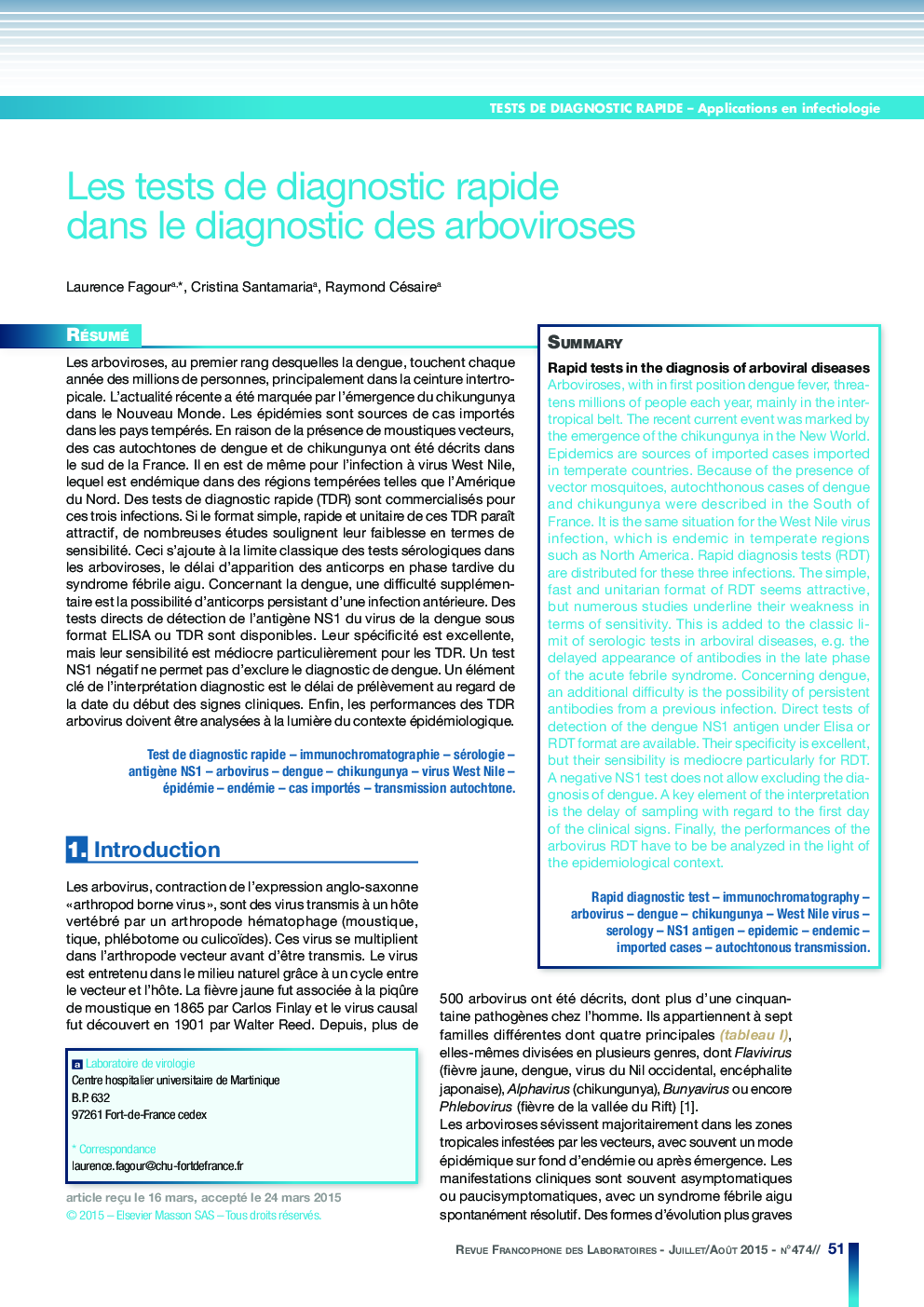| Article ID | Journal | Published Year | Pages | File Type |
|---|---|---|---|---|
| 7647106 | Revue Francophone des Laboratoires | 2015 | 12 Pages |
Abstract
Arboviroses, with in first position dengue fever, threatens millions of people each year, mainly in the intertropical belt. The recent current event was marked by the emergence of the chikungunya in the New World. Epidemics are sources of imported cases imported in temperate countries. Because of the presence of vector mosquitoes, autochthonous cases of dengue and chikungunya were described in the South of France. It is the same situation for the West Nile virus infection, which is endemic in temperate regions such as North America. Rapid diagnosis tests (RDT) are distributed for these three infections. The simple, fast and unitarian format of RDT seems attractive, but numerous studies underline their weakness in terms of sensitivity. This is added to the classic limit of serologic tests in arboviral diseases, e.g. the delayed appearance of antibodies in the late phase of the acute febrile syndrome. Concerning dengue, an additional difficulty is the possibility of persistent antibodies from a previous infection. Direct tests of detection of the dengue NS1 antigen under Elisa or RDT format are available. Their specificity is excellent, but their sensibility is mediocre particularly for RDT. A negative NS1 test does not allow excluding the diagnosis of dengue. A key element of the interpretation is the delay of sampling with regard to the first day of the clinical signs. Finally, the performances of the arbovirus RDT have to be be analyzed in the light of the epidemiological context.
Keywords
Related Topics
Physical Sciences and Engineering
Chemistry
Analytical Chemistry
Authors
Laurence Fagour, Cristina Santamaria, Raymond Césaire,
